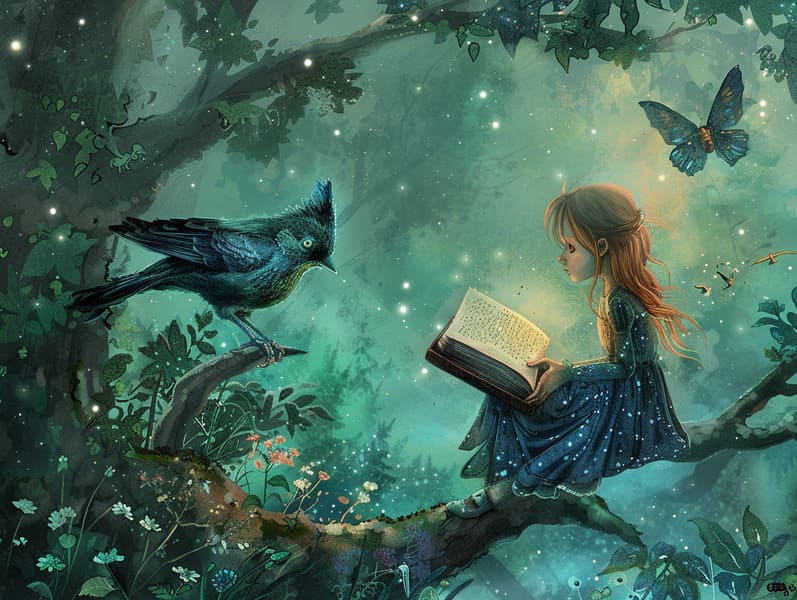Delving into the Background of Fairy Tales to Read with the Everlasting Attraction.
Delving into the Background of Fairy Tales to Read with the Everlasting Attraction.
Blog Article

Vintage fairy tales have long histories. These narratives have been relayed from one generation to the next centuries before they were ever inscribed. They originated from a variety of societies, including European traditions. They were initially shared among older generations, often carrying themes and messages mirroring the societal norms and beliefs of the time.
The Brothers Grimm, Jacob and Wilhelm, were among the first to gather many of these beloved stories. Their published works, "Grimm's Fairy Tales," included classics like "Cinder Maid," "Hansel and Gretel," and "Schneewittchen," which have since become essentials in the world of children's fairy tales. Similarly, Hans Andersen's enchanting fairy tales, such as "The Story of the Little Mermaid," and "The Duckling that Could," have enchanted hearts worldwide, securing their place in the pantheon of timeless fairy tales.
Even though they are old, classic fairy tales remain as meaningful as ever, especially as nighttime stories for kids. These whimsical stories are now available in multiple formats, including colorful picture books, enchanting animations, and online storybooks.
Their lasting appeal can be connected to several charming aspects:
Vital Lessons: Ancient fairy tales often teach important moral lessons. Tales like "The Story of the Boy Who Cried Wolf" teach the value of integrity, while "The Tale of the Tortoise and the Hare" show the benefits of perseverance and modesty. These narratives offer the young clear distinctions between moral and immoral, developing their moral compass in a subtle yet impactful way.
Kindness and Comprehension: Old fairy tales frequently portray heroines facing difficulties and adversities, stimulating listeners to empathize with their struggles and back their triumphs. For instance, "The Story of Beauty and the Beast" emphasizes the merit of looking beyond appearances to comprehend the real character of a person, encouraging sympathy and discernment.
Cultural Appreciation: Many classic fairy tales are deeply embedded in the cultural contexts from which they were born. Discovering these fairy tales can provide intriguing perspectives into different cultures, developing a sense of world insight and awareness.
Fantasy and Innovation: The whimsical elements in ancient fairy tales—supernatural elements—unleash children’s imaginations. These fairy tales lead readers to fantasy realms, enlivening imaginative thinking and a sense of fascination that remains a lifetime.
Traditional fairy tales are not only spellbinding but also illuminating. They function as delightful tools in advancing various mental and emotional abilities in children. When ancient fairy tales are recited, they cultivate language proficiency by presenting new terms and meanings and detailed sentence structures. This practice also fosters auditory perception and mental focus, as children concentrate deeply, ready to see what happens next.
Furthermore, debating the themes and characters of ancient fairy tales can develop cognitive skills and intellectual skills. Kids are taught to see patterns, expect results, and know cause and effect. These discussions also boost children speak out their thoughts and feelings, cultivating their emotional intelligence.
In today’s technological era, the abundance of digital fairy tales has made these narratives more acquirable than ever. Online resources and digital apps offer broad selections of Grimm's fairy tales that can be viewed or listened to anytime, anywhere. Fairy tales read aloud are particularly widespread, making available an fun way for little ones to engage with these fantastical tales. Narrated books and read-out-loud videos lead characters and settings to life, often complemented by mesmerizing background sounds and songs that augment the tale journey.
The persistent attraction of classic fairy tales lies in their ability to alter to current times while staying true to their essential themes. Contemporary versions of these fairy tales often integrate more inclusive characters and modern settings, making them understandable to today’s audience. However, the underlying themes of gallantry, humanity, and even-handedness remain unchanged, continuing to resonate with young listeners of all ages.
Timeless fairy tales also offer a sense of warmth and comprehensibility. They supply a structured narrative with a distinct beginning, middle, and end, often drawing to a close with the resolution of conflicts and the triumph of rightness over wrongness. This these guys steadiness can be consoling for little ones, delivering a sense of consistency in an always shifting world.
Old fairy tales continue to captivate and instruct new generations, maintaining their fascination and applicability in modern society. As nighttime stories for kids, they present a perfect blend of captivation and insight, backing moral values, empathy, and creativity. The abundance of free fairy tales online and the popularity of fairy tales recited make sure that these ancient stories remain accessible to new generations.
By conserving and circulating these narratives, we continue to appreciate the rich tapestry of lore and cultural heritage. Whether you are accessing a colorful picture book, accessing a cyber library, or listening through an read-aloud book, the captivation of Grimm's fairy tales is always within reach. These stories show us of the consistent strength of storytelling and its ability to bring us together across centuries and lands.
Whether you are reading a gorgeously illustrated book, enjoying a digital collection, or listening through an voice book, the spell of Grimm's fairy tales is always within reach.
These fairy tales reveal of the unceasing impact of narratives and its ability to unite us across eras and regions, weaving a spell that charms and informs alike.